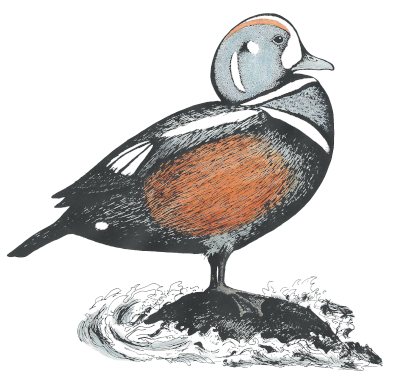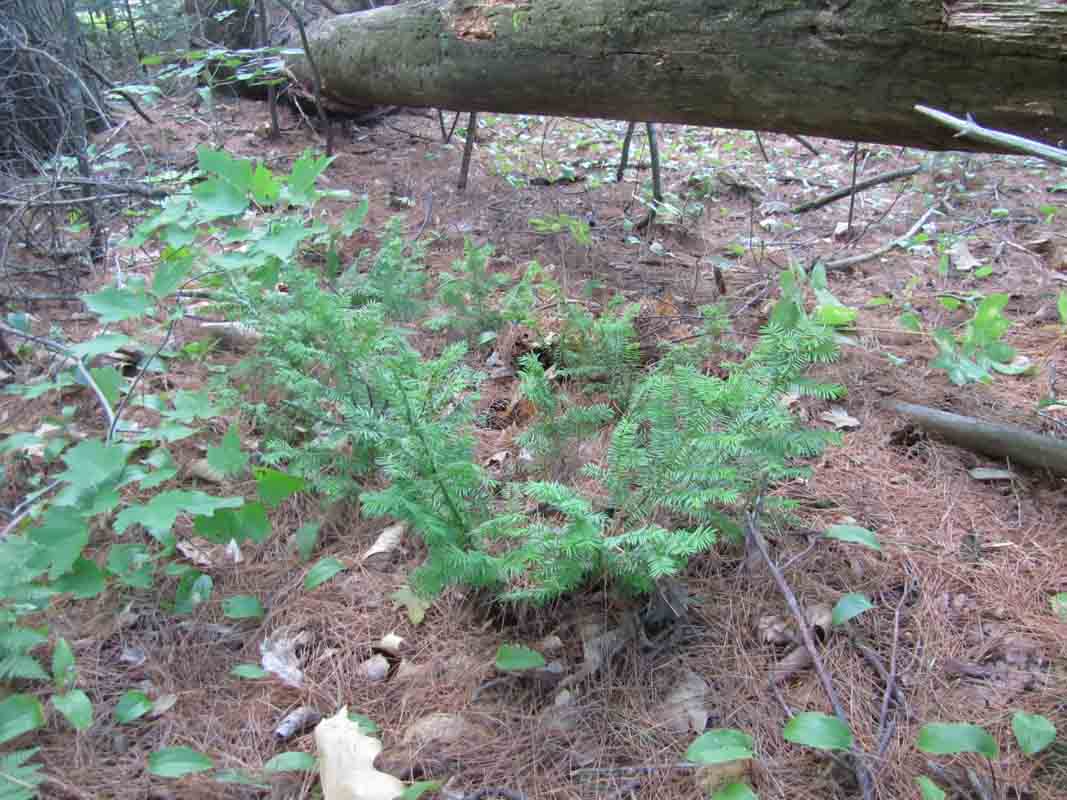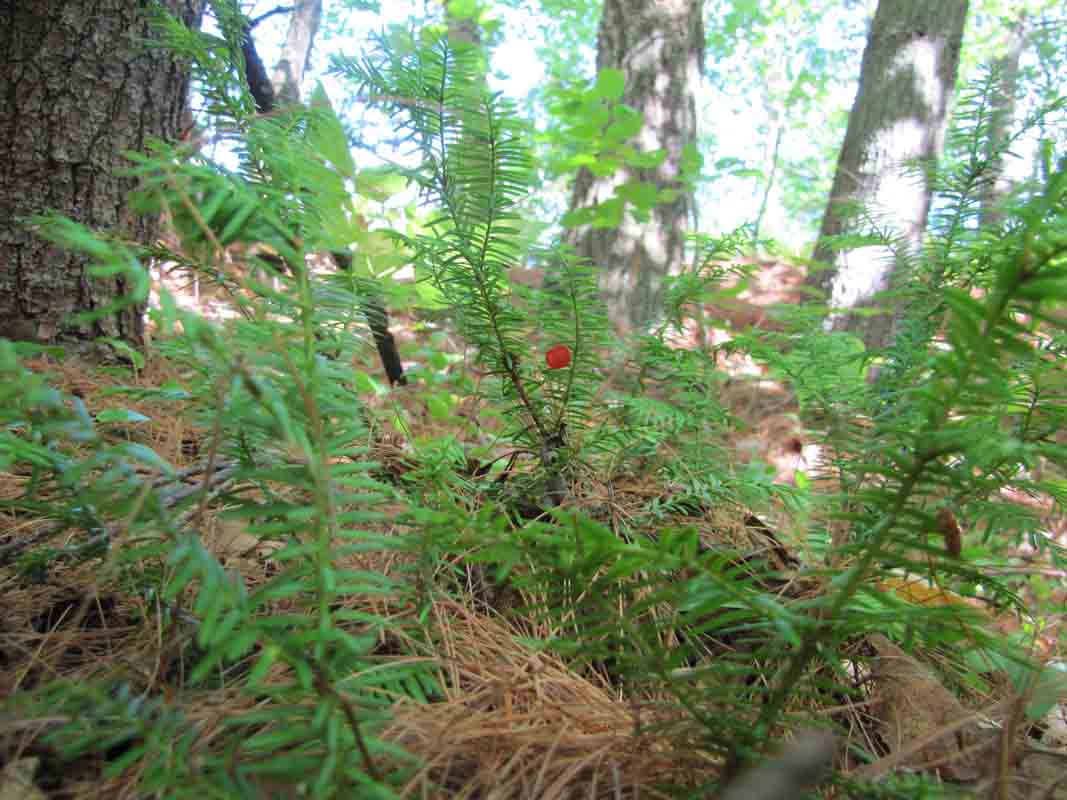
Taxaceae - yew family
Taxaceae is a small family, with only 4 or 5 genera and fewer than two dozen species worldwide. Only two genera (Taxus and Torreya) grow in the United States and Canada, and New England is home to only Taxus. Although a few species of Taxus have occasionally escaped from cultivation in New England, they are not widespread, and only Taxus canadensis will be found growing away from landscaped areas.
Maine is home to 1 species in 1 genus.
Taxus (1 species)
Taxus canadensis - American yew
Taxus (yew)
The word taxus (with a lower case "t") was the name used by the ancient Romans for the yew tree (Taxus baccata) of their area, which can grow to tree size. Pliny referred to the smoke derived from its burning as being used to kill mice [Natural History 24:116], and Julius Caesar told of Cativolcus, one of two kings of the Eburones, committing suicide by drinking its juice [De Bello Gallico, VI 31:5].
Taxus canadensis (American yew) has leaves that appear to be two-ranked. However, if you look closely, you will see that they are attached at various points all around the stem, similar to the attachment of leaves of Abies balsamea (balsam fir) and Tsuga canadensis (eastern hemlock). The difference is that most Taxus canadensis leaves twist at the point that they diverge from the stem.
The specific epithet, canadensis, is the genitive singular of canadensis—the nominative and genitive are the same for this word—and means “of Canada”.


(click on an image to enlarge)
Note:
1. Taxonomy and nomenclature follow Flora Novae Angliae by Arthur Haines (2011, Yale University Press, ISBN 978-0-300-17154-9).